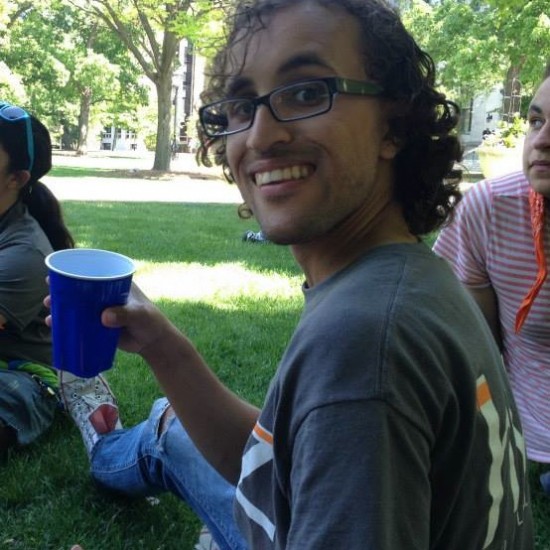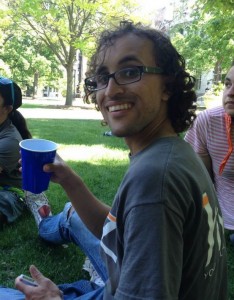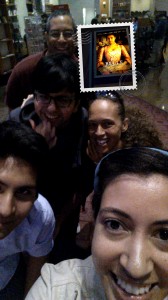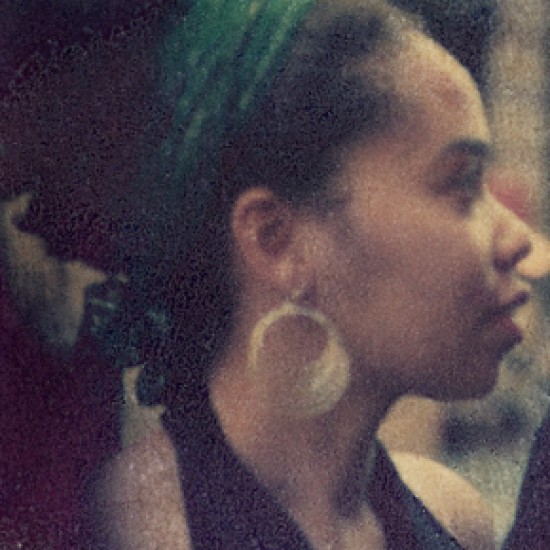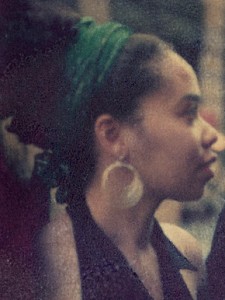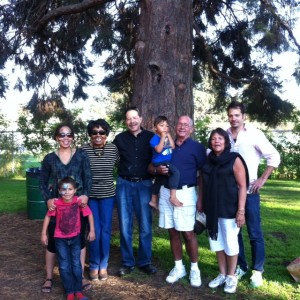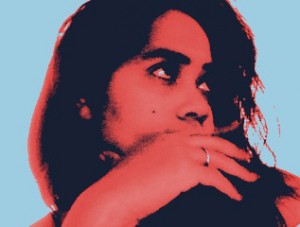“The problem is not that we all have these different view of things, it is that we each consider our views the only reality. We forget that life is truly a matter of perspective.” –Angel Williams, Being Black
I was on the phone with my friend, Lily, the other night, delving into one of our many uniquely personal and academic discussions, when she says, “Forget hallucinogens. If you want to go on a real trip, try becoming a woman.” As a biracial cis-woman, I am unable to comprehend what this transition must be like, but I laugh, recognizing that at the root of her comment is a shared an experience of mixed marginality—of being able to see the ugly truth about race and sex in this country from both sides of the binary.
When I met Lily, she was still coming to terms with her gender identity and has only recently come out as a trans-woman. In our discussions about her transition and some of the challenges she now faces, we found in one another a new commonality of perspective unique to those who find themselves an outlier, a categorical anomaly, within the strictures of our black/white, male/female binary system. “Sometimes I’m read as male, sometimes female, “ or, often, she describes simply being stared at as people try to figure out what she is. While I understand that there are quite a few significant differences between trans and mixed people’s experiences, there are also a striking number of similarities that exist as a result of being cast into a liminal identity. Being stared at, fetishized or ostracized for being something outside the realm of puritanical gender categories is something that I, as a mixed black/white woman, can certainly relate to. Often, we mixed folk bemoan the weight of expectation people unfamiliar with our unusual, unidentifiable looks place upon us. Certainly we have every right to complain about being asked again and again what we are instead of being recognized for the people we know ourselves to be. This is part of our experience. But with our liminal perspectives, also comes a grace and maturity of wisdom that deserves equal attention and celebration. What Lily expressed to me that night as she discussed her experiences of living once as a man and now sometimes read as a woman, was her unique ability to really see and understand how being a man or woman in this society affects your quality of life. And isn’t this similar to many interracial families and mixed people’s understanding of how deeply one’s perceived race truly affects one’s life?
As incredibly difficult a journey Lily is on, I deeply respect her ability to find cause to celebrate, or at least appreciate, her unique perspective on gender. This, I think, is something that we in the mixed community can also draw from. The “Tragic Mulatto” trope has been used to dissuade people from entering interracial relationships by conveying mixed children as perpetually lonely and confused outsiders. To be mixed, then, is seen as a weakness. But after having attended the Critical Mixed Race Studies (CMRS) Conference in Chicago, I, along with the 600+ other attendees, would probably have to disagree. We are clearly not alone and if we are outsiders, we are only outsiders to a structure that has historically been used to perpetrate structural inequity and oppression.
This conference helped me to recognize that our tragic flaw is also our fundamental source of strength. It was affirming, for instance, to see so many mixed people positively sharing and discussing their experiences and research on being mixed. Panels and roundtable discussions explored everything from historical mixed race communities and the emergence of Diasporic mixed communities to contemporary analyses on creating safe spaces and support structures for mixed race students, and the future of the language surrounding mixed race in an age of post-racial color blindness. We talked about Mexipinos, Blaxicans, Hapa Black Hawaiians, “Hafu” Japanese, and so many other varieties of mixes that I didn’t have a chance to get into. There was an underlying assumption through all of this discourse that I rarely experience within a monoracial setting—an understanding of the mutability of race. It’s understood that race is inescapable in structuring our social and professional lives. But we are graced with a perspective that enables us to see beyond these physiognomic divisions, to question our own assumptions about race and discuss issues of race with an understanding of the harm and alienation that picking sides perpetrates; we have the incredible gift of seeing beyond these structures in a way that people blinded by color cannot. What I found at this conference, then, was a complete rejection of the Tragic Mulatto that insists that we are relegated to a life of lonely wandering between our various ethnic/racial/cultural communities, never quite fitting in. Instead, here was a community of people celebrating mixed heritage and trying to figure out how to use the privilege of their in-betweeness to discuss new perspectives on an antiquated system that arbitrarily divides communities and families.
I am certainly not the first to draw attention to the power of perspective. Kristen A. Renn’s study on mixed race college students calls this strength “positive marginality.” She observed that many mixed students have the ability to adjust their racial identification depending upon what a situation calls for. This is evident of “a highly evolved skill requiring emotional maturity and cognitive complexity.” (80) This is more than just flattery, but recognition of a multiracial person’s ability to understand race as an indefinite and often inaccurate social qualifier of difference. Out of this awareness, she states that mixed people are capable of “increased tolerance for difference and appreciation of commonalities, as well as multiple points of reference.” (18) Gloria Anzaldua also recognizes the power of maintaining a mestiza, or mixed, consciousness in the face of Western modes of binary thinking. In her book, Borderlands/La Frontera, she writes, “La mestiza constantly has to shift out of habitual formations; from convergent thinking, analytical reasoning that tends to use rationality to move toward a single goal (a Western mode), to divergent thinking, characterized by movement away from set patterns and goals and toward a more whole perspective, one that includes rather than excludes.” (141) We as a community can embrace a huge variety of perspectives; diversity, for Anzaldua, is not about our differences as they divide us, but the way in which this variety strengthens and unites us as a whole.
To be clear, I am not advocating that we recognize the privilege of our perspective out of any sort of post-racial, anti-affirmative action nonsense. Quite to the contrary, I think that becoming aware of our “positive marginality” enables the mixed race community to remain conscious of race and to resist color-blind rhetoric that seeks to assimilate and, essentially, lighten/whiten communities of color. By virtue of our birth, origins, and families, we cannot ignore the presence that race plays in our lives. Nothing about a mixed racial identity is intrinsically assumed. It is complicated, a process of constant personal upheavals and daily confrontations with people trying to mentally shuffle us into the correct racial category. We are never a who, but a what. To be able to understand the fluid and faulty nature of race on such an intimate level affords us an incredibly unique perspective on those invisible fissures that have for so long appeared to divide us.
We can endlessly argue about systemic racism and complain about the various micro-aggressions we face. We need to keep up discussions around how cases like that in Ferguson are a part of the same white supremacist trappings that frustrate, hurt and oppress us in the mixed community. This is entirely necessary to discuss and often underpins our identities as mixed race individuals. But how often do we stop to give thanks to our families for bestowing us with such a unique blend of cultural traditions, lineages and stories, including and/or in spite of the racist views that come with it? How often do we ever look at ourselves in the mirror and feel grateful for being so damn good looking despite being exoticized as a result? I think that we can be brave, like Lily, and embrace this discomfort and these challenges with strength, humility and gratitude. Moreover, we can do this together; meet-ups like the CMRS conference have made me even more grateful for the mixed race community and our ability to collectively celebrate our many heritages.
Sources:
Renn, K. A. (2004). Mixed Race Students in College: The Ecology of Race, Identity and Community on Campus. Albany: State University of New York Press.
Anzaldua, G. (2004) La Conciencia Mestiza: Toward a New Consciousness. In Ifekwunigwe, J. O. (Ed.) Mixed Race Studies: A Reader. (pp. 139-141). New York: Routledge.
Williams, A. K. (2000). Being Black. New York: Viking Compass.
By Guest Blog Coordinator, Kaily Heitz
[rescue_column size=”one-third” position=”first”]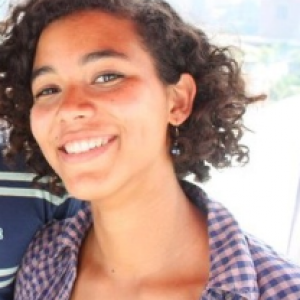 [/rescue_column] Kaily Heitz is a recent graduate from Pitzer College, where she co-created a club for mixed race students called MERGE. While she received her degree in Environmental Analysis, her research interests are just as mixed up as she is; these include art, photography, spirituality, environmental justice, politics and mixed race studies. She currently works as a writing tutor and freelance writer, editor and researcher in the Bay Area. You can find more of her writing on her blog, kailyheitz.worpress.com.
[/rescue_column] Kaily Heitz is a recent graduate from Pitzer College, where she co-created a club for mixed race students called MERGE. While she received her degree in Environmental Analysis, her research interests are just as mixed up as she is; these include art, photography, spirituality, environmental justice, politics and mixed race studies. She currently works as a writing tutor and freelance writer, editor and researcher in the Bay Area. You can find more of her writing on her blog, kailyheitz.worpress.com.



